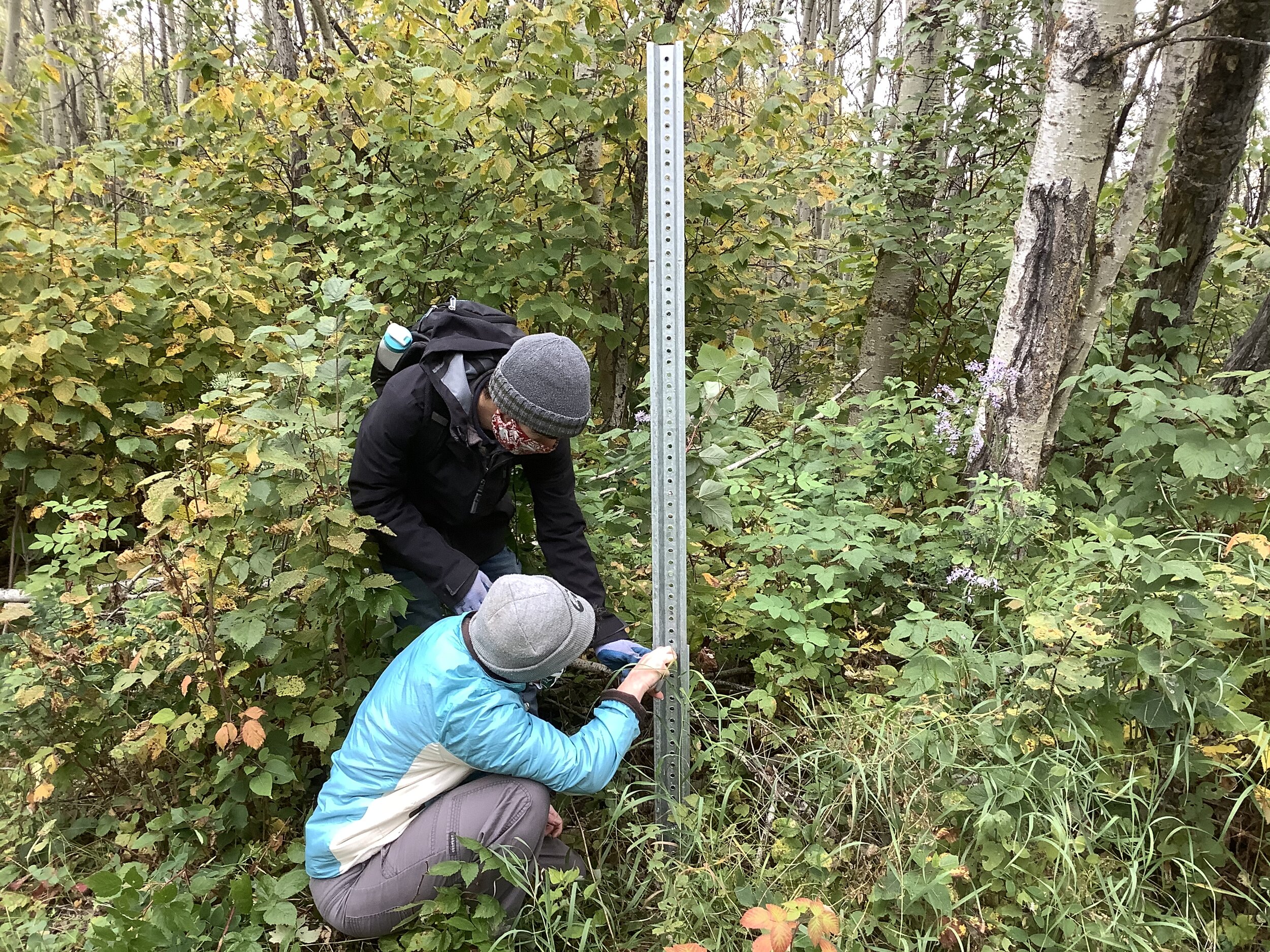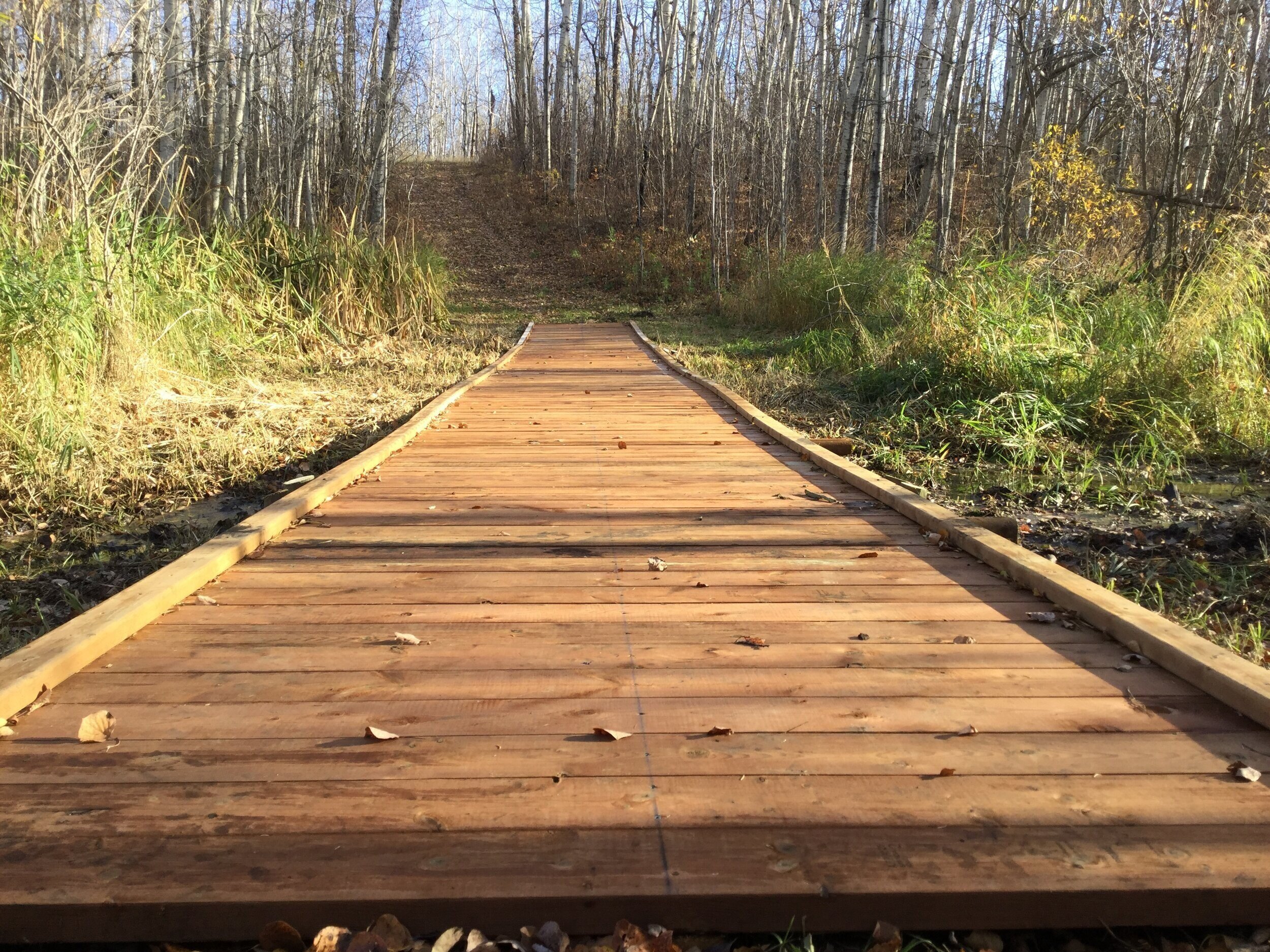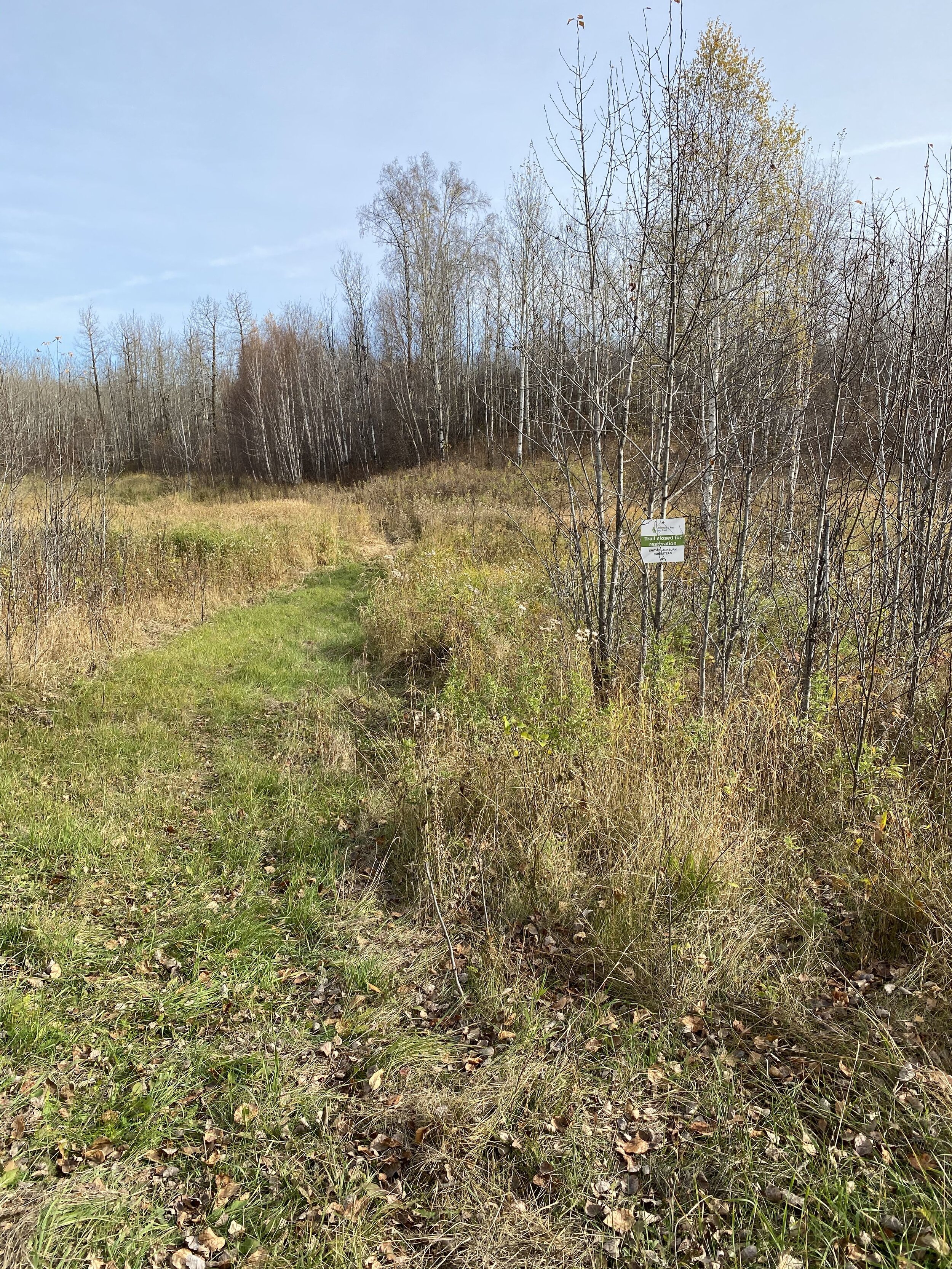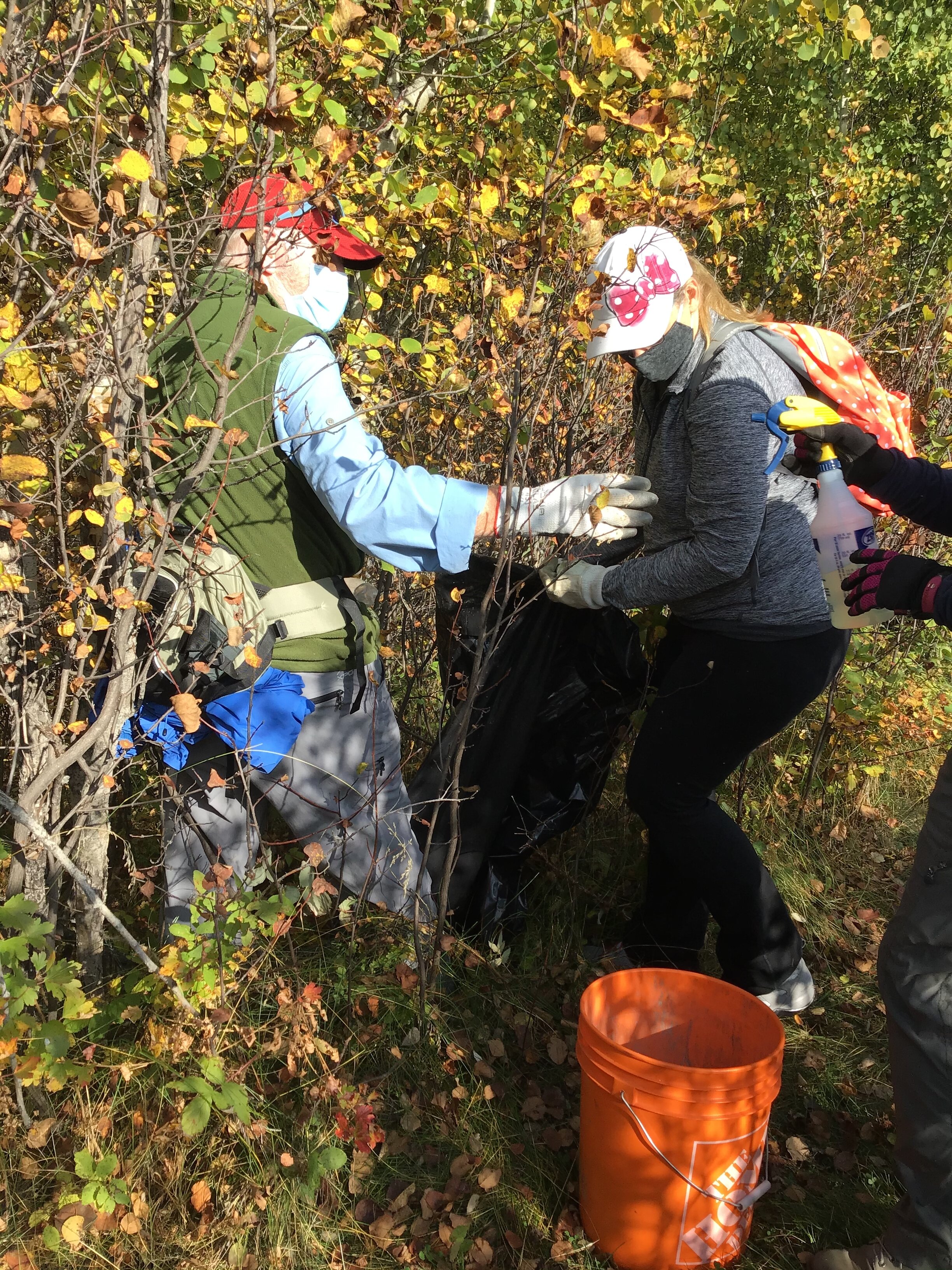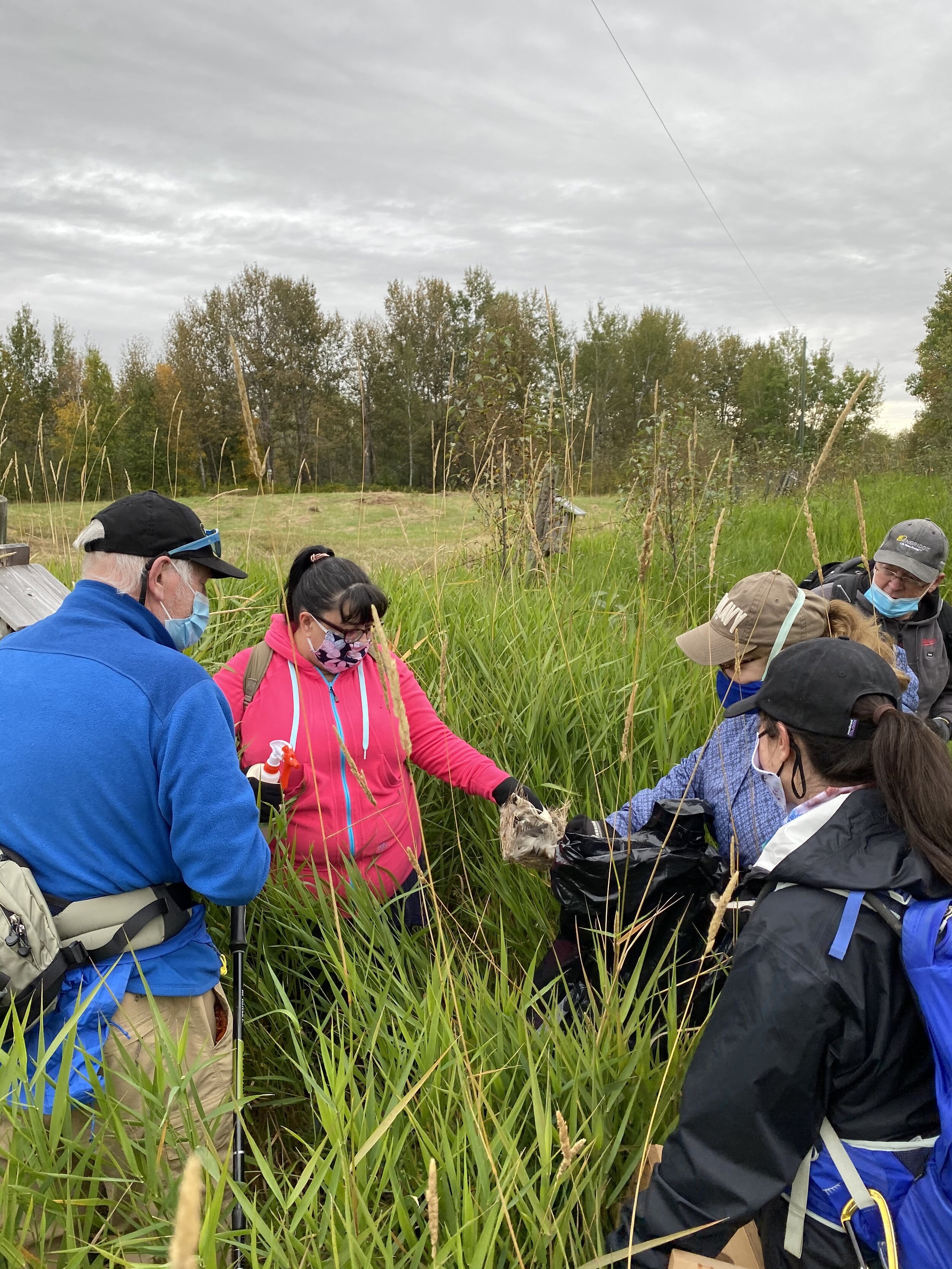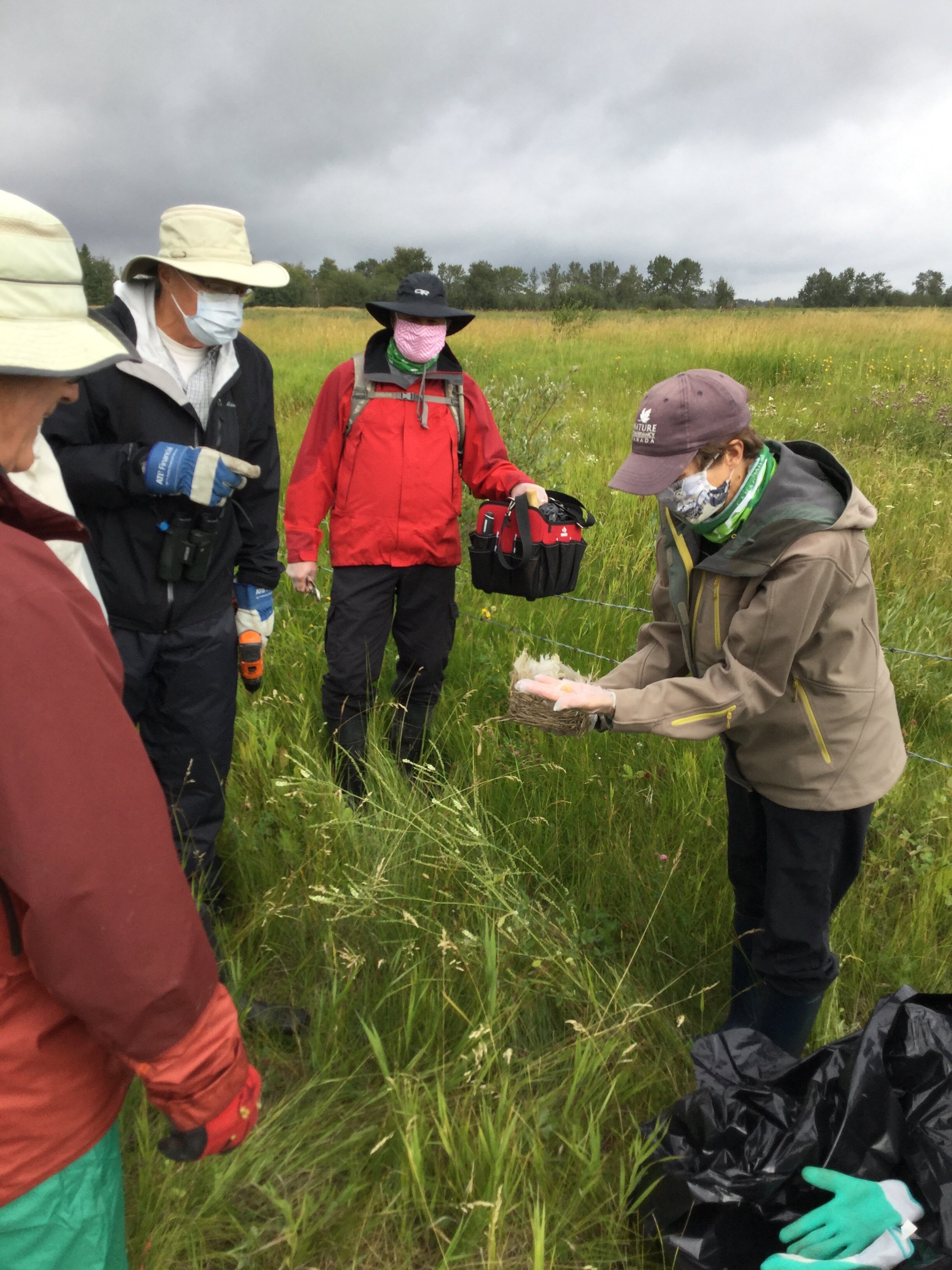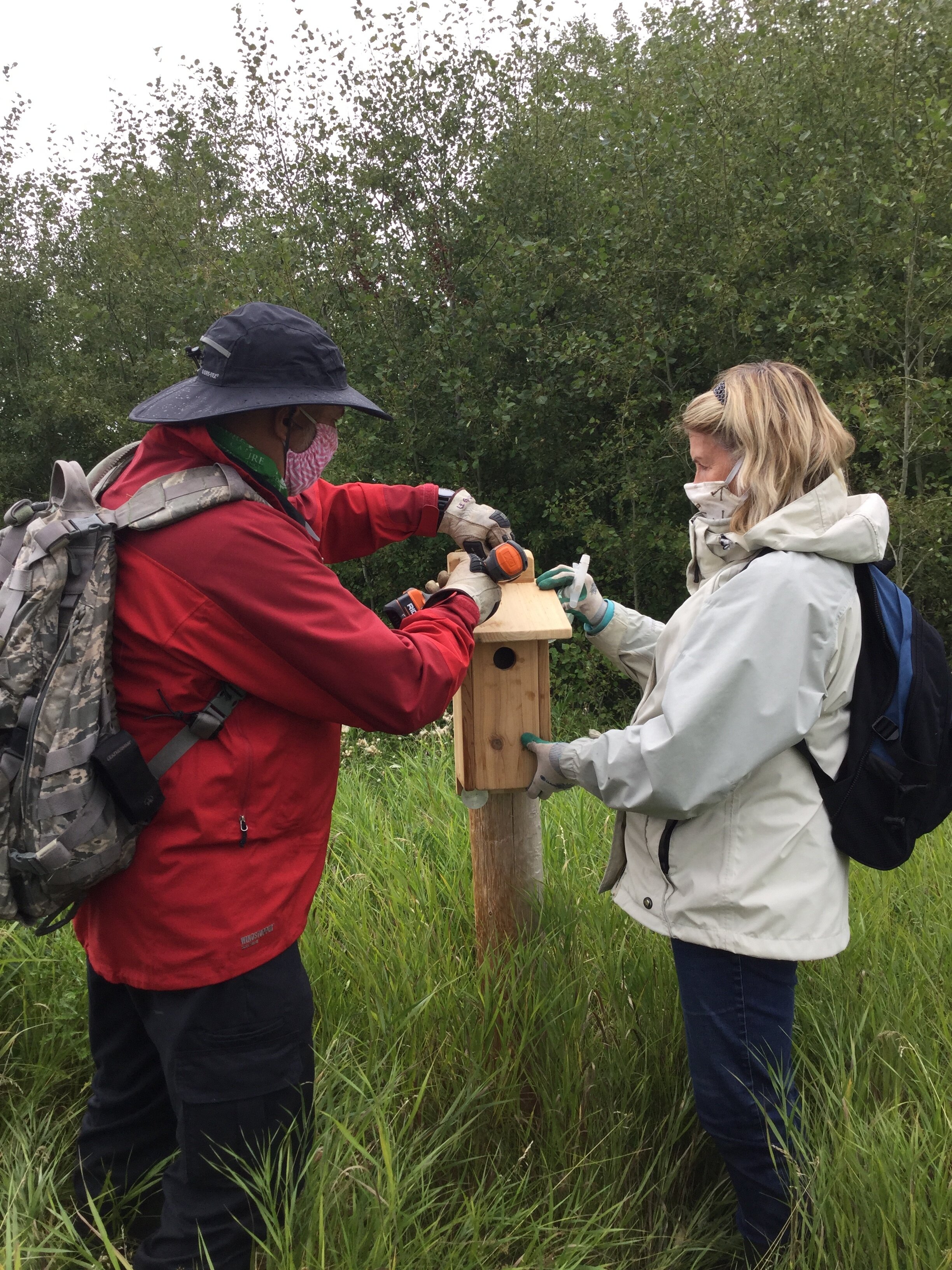The COVID-19 pandemic certainly changed the way we live, work, and play, but it did not lessen the work needed to care for our conservation lands! While some of our regularly scheduled work was put on hold this year, the implementation of additional safety measures allowed us to resume our priority fieldwork in the summer and fall. EALT staff and volunteers worked very hard this season to make sure our core stewardship work was able to be completed. Read on to learn about some of the things we accomplished this season.
Goats Galore!
One of the most note-worthy stewardship activities this field season was our Targeted Goat Browsing project at Pipestone Creek. Over 500 goats visited the land twice during the summer to munch on invasive plants, many of which are difficult to access on the steep slopes and in between the young planted spruce trees. They did a fantastic job of helping us control our Creeping Thistle and Common Tansy patches, and we hope to have them back again next year. You can read more about this project here.
Sign Installation
This was a summer of a lot of signs! In an effort to make our conservation lands as accessible and visitor-friendly as possible, we have been installing boundary, map, and directional signage that will help guide visitors as they explore our lands.
The majority of these signs were installed at two of our newer lands, Smith Blackburn Homestead and Lu Carbyn Nature Sanctuary, but we also put up brand new map signs at Pipestone Creek and Coates as well.
In addition to directional signage, we were able to put up a new interpretive sign near the bat boxes at Boisvert’s GreenWoods to educate the public about the importance of our local bats.
Preparing Smith Blackburn Homestead
Much of our summer was spent preparing Smith Blackburn Homestead to open it to the public. This land was donated to EALT in 2018 and is a part of the UNESCO Beaver Hills Biosphere Reserve, which is a unique landscape that serves as critical wildlife habitat for this region. EALT staff and volunteers were busy preparing the land by putting up signs, mapping and maintaining trails, and coordinating new infrastructure including three new boardwalks, a pedestrian entrance, a new fence, and a sign kiosk. We also hid a brand new geocache here to invite and draw members of the geocaching community onto this incredible land. Plan your visit here.
Trail Maintenance
2020 was an extremely wet year, and this meant that the trails on many of our conservation lands were not able to be mowed. Thankfully, EALT staff were able to take weed whackers to Coates and Glory Hills to open up some of the most overgrown trails by hand. Volunteers joined for a second round to help us clip all the remaining overhanging branches and clean up the trails for visitors. This event also hosted several people who volunteered as part of their company’s Day of Giving.
Weeding for Wildlife
While the goats helped us out at Pipestone Creek, we still had a number of lands to visit to manage the ongoing intrusion of invasive plants.
Managing invasive plants remains an important task to ensure that the native ecosystem stays healthy. Invasive species that have not evolved in this region can quickly overtake an ecosystem and choke out native plants that are an essential source of food and shelter to wildlife, including pollinators. This year, we got out to Bunchberry Meadows, Boisvert’s GreenWoods, Lu Carbyn Nature Sanctuary, Glory Hills, Golden Ranches, and Coates and tackled patches of orange hawkweed, white cockle, creeping thistle, and common tansy.
Nest Box Cleaning
With the help of our amazing volunteer team, we were able to clean almost 300 nest boxes on our conservation lands this fall! Nest box cleaning is an important part of our annual stewardship program as it encourages better occupancy of the boxes and prevents parasites and diseases from harming our local birds. We found that most of our boxes for chickadees/wrens, bluebirds/Tree Swallows, Saw-whet Owls, and waterfowl were in fact used this season, which is great news. We also had a few surprise guests like a family of flying squirrels!
Wildlife Cameras
We use wildlife cameras across our conservation lands to monitor the wildlife living on and traveling through them. If you’ve been out to a volunteer event with us, you may have been along when we’ve changed out some of the batteries and memory cards. This summer we captured photos of elk, bears, moose, white-tailed and mule deer, hares, and more! Stay tuned for more fun wildlife finds as we continue to go through the photos.
A heartfelt thank you goes to all of the incredible volunteers who joined us for events throughout the summer in the midst of the global pandemic. We are so grateful for the dedication and commitment of everyone who helped us make our field season such a success.
While we have now closed our volunteer events for the remainder of the year, we hope that next year will bring even more fun stewardship events. If you are interested in volunteering with us in the New Year you can sign up for our volunteer newsletter or keep an eye out on our events page or social media.



